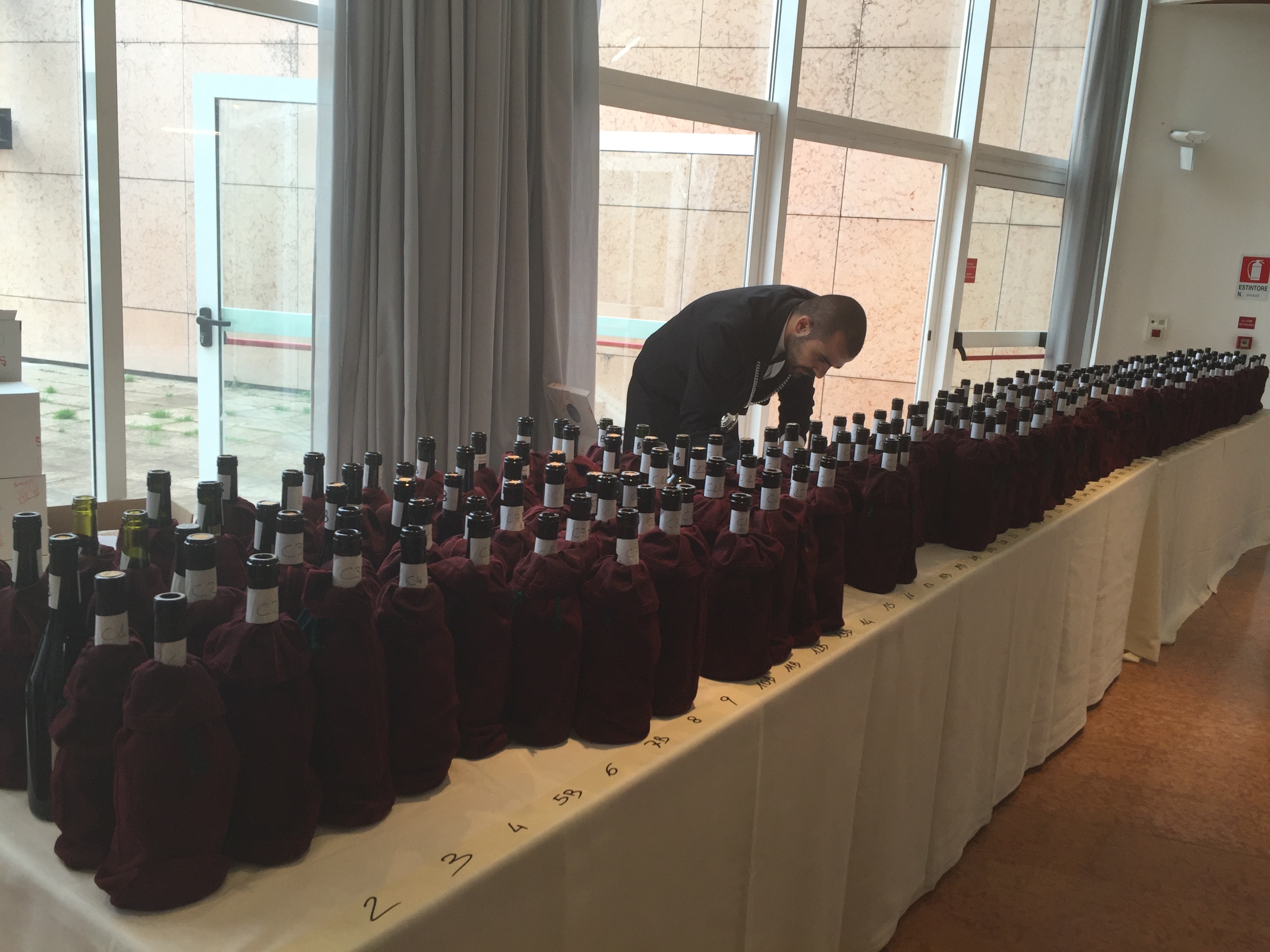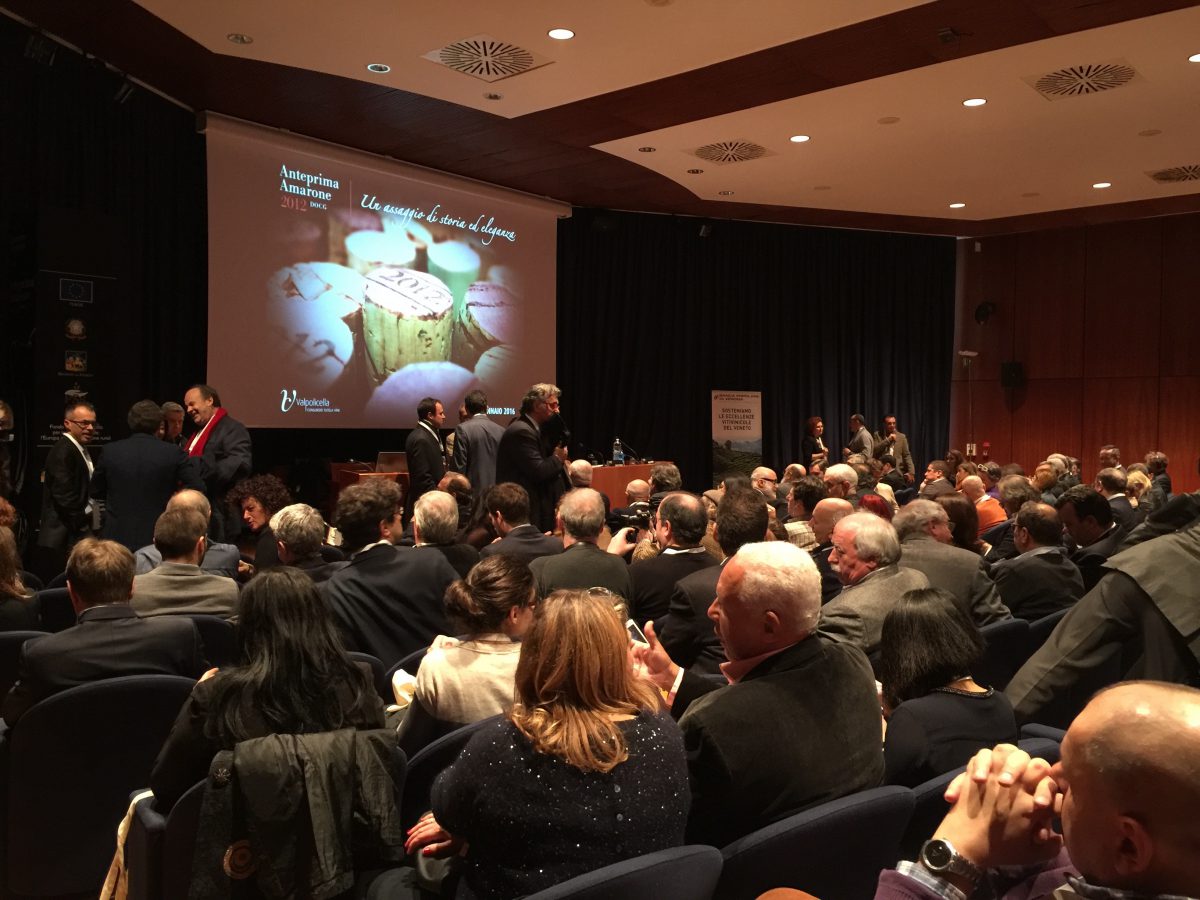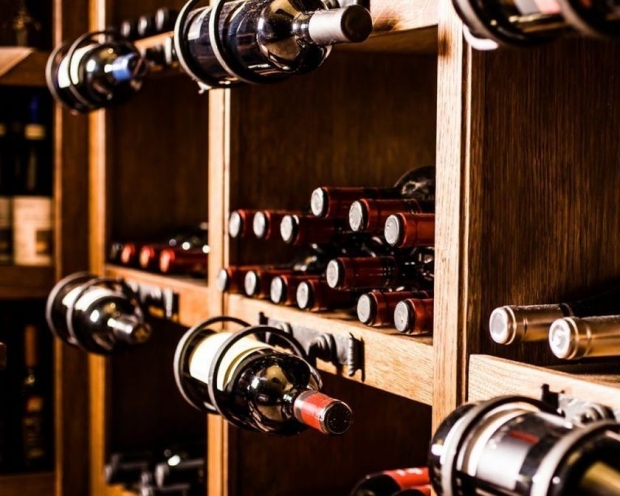 The 13th Edition of Anteprima Amarone was held in Verona on January 30 and 31st when 74 producers revealed their wines from the 2012 harvest to international press, industry insiders and general public.
The 13th Edition of Anteprima Amarone was held in Verona on January 30 and 31st when 74 producers revealed their wines from the 2012 harvest to international press, industry insiders and general public.
This preview was promoted by the Consortium of Valpolicella and was held at the beautiful historical Palazzo della Gran Guardia, Verona.
In addition to tasting, the program included a conference on opening day, moderated by journalist Andrea Scanzi who, together with Christian Marchesini, President of the Consorzio Valpolicella, discussed the Consortium. There was also a technical presentation of the vintage curated by Dr. Diego Tommasi of Cra di Conegliano, along with the performance of the denomination on foreign markets was presented by Denis Pantini of Nomisma Observatory.
Christian Marchesini confirms “the role of the brand Ambassador of the territory in the world of the Great Red Veronese, but mainly is the driving force for the local economy and its tourist exploitation.” He goes onto say: “Unique – Amarone is a wine-icon, a seductive wine”, “fruit of the earth, where 97% of the vines were indigenous. The discovery in recent years of the Oseleta variety and the return to Guyot, is raising more the gap between modernity and tradition, between different styles and corporate philosophies”
Denis Pantini also points out that “According to 35% of the producers, the denomination of origin is the main factor of Amarone success abroad, even before the reputation of the corporate brand (I think 21%) and Italian origin (15% ), In fact, nearly 1 out of 2 producers believe this.”
He goes on to say –
“The leading export markets for Amarone include: USA, China, Russia and Canada. These countries, together with the Northern Europe export 60% of Amarone della Valpolicella.”
“Going into detail of the placement and the Amarone market share abroad, Germany (18%), Switzerland (14%) and Canada (13%) constitute the main countries of destination, followed by the United States (10%), Scandinavia (mostly with Denmark and Sweden) and the United Kingdom.”
In light of the importance that these markets hold, a study on the Canadian consumer was conducted. From this survey by the Wine Monitor Nomisma on 1,200 purchasing managers of households, showed a rate of penetration of Italian red wines of 44%, with a 25% share of red Valpolicella with Amarone 19%.
This study has also shown the the demographics of the Amarone Canadian consumer has a household income of more than $75,000 CDN/YR, has a high level of education and has traveled to Italy. An element that confirms the strategic importance of the enhancement of the Valpolicella area.
“It’s been a difficult year for 2012” said Tomasi
He goes on to say: “It’s the first vintage that marked the real climate change, followed by 2013, 2014, 2015 with an unpredictable climate change and a seasonal change characterized by water stress, so these conditions there will always bring more to the September stage – he concluded – to create the true quality. The Amarone 2012 vintage, with softer wines, fruity, gave great results especially for the last stage of maturation.”
In 2015 Amarone has reached 310 million Euros (a 6% increase over the previous year), calculating that a bottle in six was exported to foreign markets, and will pay a close attention to the Canada market.

Amarone 2012 Preview
74 wineries represented, with 78 labels, 32 of which were bottled and 46 from the barrel
Some that stood out:
Accordini Stefano Acinatico Amarone Classico 2012 (B) – very promising
Albino Armani Cuslanus Amarone Classico 2012 (C) – beautiful transparency, acidity and elegance – lots of potential
Bertani Amarone Valpantena 2012 (B) – elegance, some high acidity
Cantina Negrar Domini Veneti Amarone Classico 2012 (B) – elegant, classic
Massimago Amarone 2012 (B) – elegant, long finish
Novaya Amarone Classico 2012 (C) – a classic
Peter Zanoni Zovo Amarone 2012 (B) – very dry, great balance with fruit, acidity and taste
Rubinelli Vajol Amarone Classico 2012 (C) – balanced
Zymè Amarone Classico 2012 (C) – some sweetness, yet elegant
B = bottle, C = barrel sample



![Canada at ProWein 2016 [30 and 50 Degrees North]](https://www.liz-palmer.com/wp-content/uploads/2016/02/Prowein-2016-1200x572.jpg)